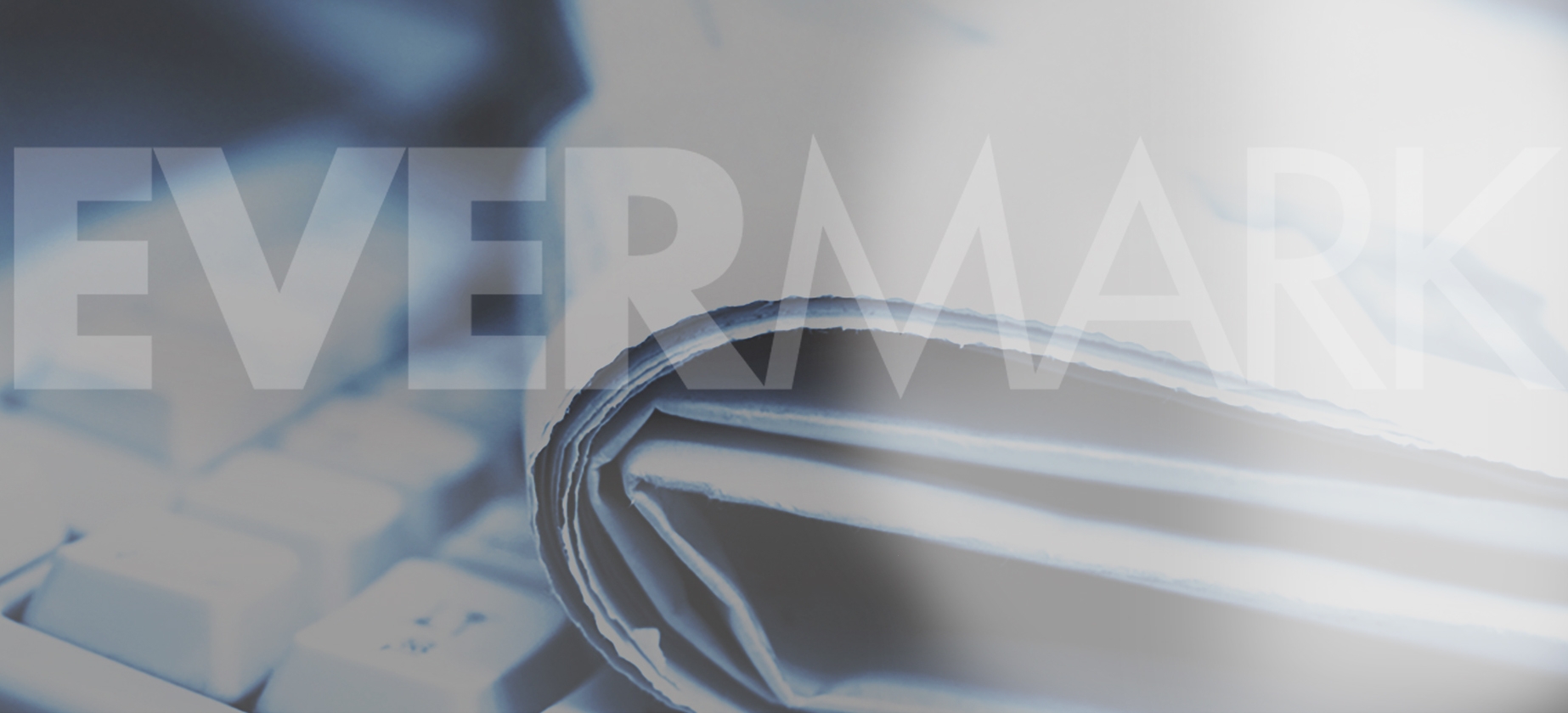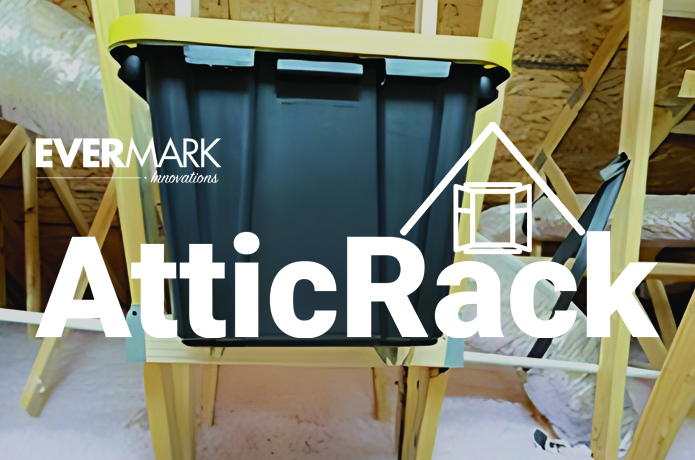Trying to figure out which stair plans to go with for your new home construction or staircase remodel project?
Recent trends in interior design revolve around terms such as “modern industrial,” minimalist, Craftsman, Contemporary, and others. Likewise, when considering interior design and the staircase, there are some top stair trends as well.
Designers and builders say top stair trends often drive how and why homeowners pick their chosen stair plans.
These stair trends are:
Minimalist and Sleek Designs
Many homeowners prefer clean, minimalist staircase designs that blend seamlessly with modern interiors. This trend often involves using glass, metal, or thin wooden elements to create a light and open feel.
Floating Staircases:
Floating staircases have become increasingly popular due to their visually striking appearance. These staircases are designed without visible risers or supporting structures, giving the illusion that the treads are floating mid-air.
Metal and Glass Combinations:
Staircases that combine metal and glass elements are a contemporary choice. The metal provides structural support and a modern aesthetic, while the glass balustrades add transparency and an open look.
Mixed Material Designs:
Homeowners are exploring creative combinations of materials, such as wood and metal, wood and glass, or even concrete and glass, to create unique and eye-catching staircase designs.
Open and Floating Risers:
Staircases with open risers or floating risers (where the treads extend beyond the stringers) create a visually open and airy feel, adding to the contemporary appeal of the design.
Curved and Spiral Staircases:
While not new trends, curved and spiral staircases remain popular for their elegant and space-saving qualities.
Smart Lighting Integration:
Integrated lighting solutions within the staircase design, such as LED strips or spotlights, are becoming more prevalent, adding a touch of modernity and enhancing safety.
Design trends can evolve rapidly and new developments and innovations in residential staircase design might pop up next week! However, our top trends likely have lasting appeal and timeless attraction that transcend the latest fads.
Let’s look a little deeper at each one to see if any of our top trends resonate with you for your staircase design…
MINIMALIST AND SLEEK STAIRCASE DESIGN:
“Minimalist and sleek design” in the context of staircase design refers to creating a staircase with clean lines, simplicity, and a modern aesthetic. It reduces unnecessary ornamentation and focuses on essential elements to achieve a visually uncluttered and elegant look. Here are some key characteristics of a minimalist and sleek staircase design:
Clean Lines:
This design features straight, simple lines with minimal curves or intricate detailing, which creates a streamlined and sophisticated appearance.
Fewer Ornamental Elements:
Minimalism avoids excessive ornamentation, decorative carvings, or intricate patterns. Instead, the focus is on the inherent beauty of the materials and structural elements.
Neutral Color Palette:
Staircases with a minimalist and sleek design often use neutral color schemes, such as white, gray, black, or natural wood tones. These colors contribute to a timeless and understated elegance.
Open and Airy:
This design creates a sense of openness and space, achieved through open risers, glass balustrades, or using materials that allow light to pass through, such as glass or perforated metal.
Thin and Lightweight Materials:
Using lightweight materials, such as glass, metal, or thin wooden elements, adds to the sense of lightness and modernity. It can make the staircase appear floating or suspended in the air.
Hidden Fixtures and Hardware:
In a minimalist design, fixtures, and hardware are often concealed or integrated seamlessly into the structure, reducing visual clutter.
Functional Design:
While aesthetics are essential in minimalist design, functionality is also highly valued. The staircase is designed to be user-friendly and to fit seamlessly into the overall layout of the space.
Contemporary Railing Design:
The handrails and balustrades are typically simple and linear, complementing the clean lines of the staircase. Popular choices include slim metal railings, glass panels, or minimalist wooden handrails.
Space-Saving Solutions:
In smaller spaces, minimalist staircases can be designed to save space efficiently, with innovative solutions like spiral staircases or compact floating designs.
Overall, a minimalist and sleek staircase design aims to create a visually striking and timeless feature that enhances the architectural character of the space without overpowering it. This type of design is well-suited for modern and contemporary interiors, where simplicity and elegance are highly valued.
FLOATING STAIRCASE DESIGN:
Floating staircase designs have been increasingly popular in modern architecture due to their unique and visually striking appearance. While the design allows the treads to appear unsupported or “floating,” it must adhere to standard building codes and safety regulations. Here are some trends in floating staircase design that maintain compliance with building codes:
Structural Integrity:
One of the critical aspects of a floating staircase is the hidden structural support that keeps it secure and safe. Architects and engineers use strong materials like steel, concealed brackets, or cantilevered designs to ensure the staircase has sufficient structural integrity and load-bearing capacity.
Glass Balustrades:
Glass balustrades are a prevalent trend in floating staircase design as they provide an unobstructed view and enhance the staircase’s open and airy feel. Safety glass is used to meet building code requirements for railing strength.
Hidden Attachment Points:
Floating staircases often have concealed attachment points to maintain the illusion of a “floating” appearance. The attachment points and hardware are cleverly integrated within the staircase structure to comply with building codes without compromising aesthetics.
Open Risers:
Many floating staircases feature open risers, which means no solid vertical material between the treads. Building codes typically require maximum allowable space between the treads to prevent foot entrapment.
Tread and Handrail Materials:
Floating staircases often use wood, metal, or glass for treads and handrails. These materials should meet building code requirements for slip resistance, durability, and load-bearing capacity.
Balancing Aesthetics and Safety:
While the visual appeal of a floating staircase is essential, it should not compromise safety. Designers must carefully balance the aesthetic elements with safety features to ensure that the stairs meet local building codes and regulations.
Lighting Integration:
Lighting can be incorporated into the staircase design to enhance its visual impact. For instance, LED strips can be installed along the edges of the treads or underneath the staircase to provide illumination and meet safety requirements for adequate visibility.
Staircase Dimensions:
The dimensions of the staircase, including tread depth, riser height, and overall dimensions, should adhere to building code requirements for comfortable and safe stair climbing.
Handrail Height and Design:
The height and design should meet building code specifications to provide proper support and safety for users.
Local Building Regulations:
Building codes and regulations may vary between regions and jurisdictions. Designers and architects must ensure the floating staircase design complies with the specific building codes applicable to the project’s location.
Floating staircase designs offer creative and contemporary options for architectural expression, and ensuring compliance with building codes is crucial to guarantee the safety and usability of the staircase for its occupants. Collaborating with experienced architects and engineers familiar with local regulations is essential to achieve a successful and code-compliant floating staircase design.
METAL AND GLASS COMBINATIONS
Designing metal and glass combination staircases requires careful consideration of various factors to ensure aesthetics and structural integrity. Here are some essential considerations for designers when creating metal and glass combination staircase designs:
Safety:
Safety is paramount when designing any staircase, especially with glass components. Ensure that the glass used is safety glass, such as tempered or laminated, to prevent shattering and reduce the risk of injury in case of breakage.
Structural Stability:
Metal components, such as steel or aluminum, support the staircase. Designers must ensure that the metal framework is engineered to withstand regular load and stress to support the glass elements adequately.
Building Codes and Regulations:
Adhere to local building codes and regulations for staircase design, glass use, and handrail height and spacing. Work with structural engineers and architects familiar with these codes to ensure compliance.
Glass Thickness and Type:
The thickness of the glass used in the staircase should be appropriate for the design’s intended load capacity and safety requirements. Different staircase areas, such as treads, balustrades, or handrails, require different glass thicknesses.
Slip Resistance:
Consider the slip resistance of the glass treads if used. Various treatments or textures can be applied to the glass surface to enhance grip and prevent accidents.
Maintenance and Cleaning:
Glass surfaces can accumulate fingerprints, dirt, and smudges, so designers should consider ease of maintenance and cleaning. Opt for easy-to-clean glass and minimize areas where dirt and dust can accumulate.
Aesthetics and Transparency:
Combining metal and glass can create a visually appealing and modern staircase design. Consider balancing metal and glass elements to achieve the desired transparency and aesthetics.
Sound Dampening:
Glass can transmit sound, so designers may need to consider acoustic solutions to minimize noise transmission between floors or spaces.
Handrail Design:
Design a system that complements the metal and glass combination and provides sufficient support and safety for users. The handrail design should be both functional and aesthetically pleasing.
Lighting Integration:
The transparency of glass allows for creative lighting integration in the staircase design. Consider using LED strips or spotlights to illuminate the staircase and enhance its visual impact.
Installation:
Ensure skilled professionals install the metal and glass components to guarantee proper alignment, fit, and stability.
Budget Considerations:
Using metal and glass in staircases can be more costly than traditional materials. Designers should balance the desired aesthetics with the available budget and explore cost-effective options.
By carefully addressing these considerations, designers can create stunning metal and glass combination staircase designs that are safe and visually appealing, adding a touch of modern elegance to any interior space.
MIXED MATERIAL DESIGNS:
When utilizing mixed materials in staircase design, designers must carefully consider several factors to create a cohesive and visually appealing staircase that meets structural requirements and safety standards. Here are some key considerations:
Aesthetics and Cohesion:
Combining different materials should create a harmonious and cohesive design. Consider how each material complements the others in color, texture, and overall visual appeal.
Structural Integrity:
Each material’s structural properties should be considered to ensure the staircase’s stability and load-bearing capacity. Collaborate with structural engineers to determine the appropriate combination of materials that can support the intended design.
Material Compatibility:
Ensure that the selected materials work well together and can withstand environmental conditions, temperature changes, and humidity levels without compromising their integrity or causing potential issues like corrosion or warping.
Safety:
Safety is paramount in staircase design. Materials should meet safety standards and be slip-resistant, especially on treads and landings. Balustrades and handrails must provide adequate support and follow local building codes and regulations.
Budget Constraints:
Mixed-material designs can be more costly than a single material. Designers should balance aesthetics with the available budget and explore cost-effective options that achieve the desired visual impact.
Maintenance and Durability:
Consider the maintenance requirements of each material and how it may impact the staircase’s longevity. Choose durable materials that are easy to clean and maintain over time.
Focal Points and Accents:
Use mixed materials strategically to create focal points or accents in the staircase design. For example, combining wood and metal might draw attention to specific areas, highlighting the staircase’s unique features.
Transitional Elements:
When transitioning from one material to another, focus on the details to ensure a smooth and seamless transition, which might involve careful alignment, beveling, or transition pieces.
Design Flexibility:
Mixed materials offer design versatility. Experiment with combinations and arrangements to explore creative possibilities that fit the space’s overall architectural style and interior design.
Code Compliance:
Ensure the mixed material staircase design meets local building codes and safety regulations. This includes the dimensions, materials, and clearances required for stairs and handrails.
Environmentally Friendly Options:
Consider using sustainable and eco-friendly materials as part of the mixed material design, aligning the project with green building practices.
Installation and Craftsmanship:
The successful implementation of mixed materials relies on skilled craftsmanship during installation. Work with experienced contractors and craftsmen familiar with working with the chosen materials.
By carefully addressing these considerations, designers can create captivating mixed-material staircase designs that enhance the space’s visual appeal and provide functional and safe vertical circulation.
OPEN AND FLOATING RISERS:
Designing a staircase with open and floating risers can create a visually striking and modern focal point in a home or building. However, homeowners and architects must carefully consider several factors to ensure the staircase is aesthetically pleasing, safe, and compliant with building codes. Here are some key considerations:
Safety is the most critical factor when designing any staircase. Open risers can pose a potential risk for foot entrapment, especially for children and elderly individuals. The gap between the treads should adhere to local building code requirements to mitigate this risk. Handrails should also be included for added safety and support.
Building Codes and Regulations:
Open and floating riser staircases must comply with local building codes and regulations. These codes specify requirements for the riser height, tread depth, handrail height, baluster spacing, and other safety aspects. Architects should work closely with structural engineers to ensure code compliance.
Structural Integrity:
Floating riser staircases require robust and well-engineered support to ensure structural stability and safety. The hidden structural framework should be carefully designed and built to support the treads and withstand the weight and traffic of users.
Material Selection:
The choice of materials significantly influences the staircase’s aesthetics and durability. Solid, durable tread materials, such as engineered wood, steel, or thick glass, will ensure long-lasting performance.
Slip Resistance:
Open risers can be more prone to slipping, especially in wet or icy conditions. Choose materials with slip-resistant properties, or add non-slip treads to enhance safety.
Lighting:
Open risers allow light to pass through, creating unique lighting opportunities. Architects can integrate lighting solutions into the staircase design to enhance visual impact and visibility.
Handrail Design:
Handrails are essential for safety, especially when dealing with open risers. Design handrails that comply with building codes and provide adequate support and grip for users.
Child Safety:
If the homeowners have young children or expect frequent visits from families with young kids, consider additional safety measures to prevent accidents, such as adding a protective barrier at the open risers.
Aesthetics and Integration:
Ensure that the open and floating riser design complements the space’s overall architectural style and interior design. The staircase should integrate seamlessly with its surroundings.
Professional Installation:
Proper installation is crucial for the stability and safety of the staircase. Hire experienced contractors and craftsmen familiar with building open and floating riser staircases.
Maintenance:
Consider the maintenance requirements of the materials used in the staircase design. Choose materials that are easy to clean and maintain over time.
Using these factors and others, homeowners and architects can design open and floating riser staircases that add a touch of modern elegance to the space and provide a safe and functional element for vertical circulation.
CURVED AND SPIRAL STAIRCASE DESIGNS:
Designing a curved or spiral staircase requires careful planning and attention to detail to create a functional and visually appealing structure. Here are some critical considerations for architects and designers when creating curved or spiral staircases:
Space and Location:
Determine the available room for the staircase and its location within the building. Curved and spiral staircases often require more floor area than straight stairs, so ensure the design fits comfortably within the allocated space.
Building Codes and Regulations:
Curved and spiral staircases must adhere to local building codes and regulations. Pay attention to minimum and maximum tread width requirements, riser height, headroom, handrail height, baluster spacing, and other safety aspects.
Safety and Comfort:
Safety is paramount in staircase design. Ensure that the staircase provides a comfortable and safe user experience. Consider the ease of climbing, stability, slip resistance of treads, and the appropriate handrail design for support.
Structural Integrity:
Curved and spiral staircases require proper structural support to ensure stability and safety. Work with structural engineers to design a solid and stable supporting structure that can handle the load and stress of regular use.
Material Selection:
Choose appropriate materials for the treads, balustrades, and handrails that meet safety requirements and align with the overall design aesthetics. Consider the durability and maintenance of the chosen materials.
Aesthetics and Integration:
Curved and spiral staircases are often architectural features and focal points. Ensure the design complements the overall architectural style and interior design, harmonizing with the surrounding elements.
Handrail Design:
Be sure to design handrails that provide both safety and aesthetics. The handrails should be easy to grip, follow the curvature of the staircase, and be at a comfortable height for users. Check local building authorities to learn more about handrail design and complying with building codes.
Lighting:
Consider the lighting options for the staircase to enhance its visual impact and safety. Integrated lighting solutions can add a dramatic effect and improve visibility during the evening.
User Accessibility:
Ensure that the staircase design accommodates users of all ages and abilities. Curved and spiral staircases may not be suitable for individuals with mobility challenges, so provide alternative means of access if needed.
Construction and Installation:
Proper construction and installation are essential to achieve the desired design and functionality. Work with experienced contractors and craftsmen familiar with curved and spiral staircase construction.
Budget Considerations:
Curved and spiral staircases can be more complex and costly to design and construct than straight stairs. Consider budget constraints and explore cost-effective options without compromising safety and aesthetics.
Building Flow:
Consider how the staircase’s design affects the flow and circulation within the building. Ensure the staircase connects smoothly to the surrounding spaces and effectively serves its intended purpose.
Taking these considerations and transforming them into reality, architects and designers can create captivating curved or spiral staircases that provide functional vertical circulation and become beautiful architectural features within the space.
SMART LIGHTING INTEGRATION:
Architects and designers increasingly incorporate smart lighting solutions into staircase designs to enhance aesthetics, improve safety, and create unique visual effects. Here are some ways they are doing it:
LED Step Lighting:
LED strips or recessed LED lights can be installed along the edges or underneath each stair tread to illuminate the staircase. Lighting enhances the stairway’s visual appeal and improves safety by providing better visibility, especially in low-light conditions.
Motion-Activated Lighting:
Smart lighting systems with motion sensors can be integrated into the staircase design. When someone approaches the stairs, the motion sensors trigger the lights to turn on automatically, ensuring that the staircase is well-lit whenever it’s in use.
Light Color and Dimming Control:
Smart lighting allows designers to adjust the color temperature and brightness of the lights. They can create different moods or match the lighting to the interior ambiance.
Customizable Lighting Effects:
With programmable smart lighting, designers can create customizable lighting effects, such as color-changing patterns or dynamic lighting displays. These effects are synchronized with music or other events to create a captivating experience.
Remote Control and Automation:
Smart lighting systems can be controlled remotely through mobile apps or integrated into home automation systems. Homeowners can easily control the staircase lighting from their smartphones or set up automatic schedules for specific lighting scenes.
Integration with Smart Home Systems:
Staircase lighting can seamlessly integrate with other intelligent home devices, such as voice-controlled assistants or home security systems. This integration provides added convenience and enhances the overall smart home experience.
Energy Efficiency:
LED smart lighting is energy-efficient, consuming less electricity than traditional lighting options, contributing to sustainability, and reducing energy costs.
Accent Lighting:
Smart lighting can be strategically used to accentuate architectural details or highlight specific elements of the staircase design, such as handrails, balustrades, or decorative features.
Safety Enhancements:
Smart lighting can be combined with motion sensors to provide additional safety features, such as stairway lighting that gradually brightens as someone approaches the stairs and dims when not in use.
Time-Based Lighting:
Smart lighting systems can be programmed to adjust the lighting based on the time of day. This feature ensures that the staircase lighting is appropriately bright during the daytime and dims during nighttime hours.
Emergency Lighting:
In a power outage, smart lighting systems can be programmed to activate emergency lighting features, ensuring safe egress from the building.
Incorporating these smart lighting solutions allow architects and designers to transform staircases into captivating and functional features that add value to the overall interior design while improving safety and energy efficiency.
Overall, these are valuable insights into current trends shaping modern staircase designs in architecture and plans for stair construction and staircase remodeling.
Furthermore, with each, there is an emphasis on the importance of aesthetics, safety, and compliance with building codes. Taken in their entirety, they will help create a functional, visually appealing staircase that will have timeless appeal for years to come.



